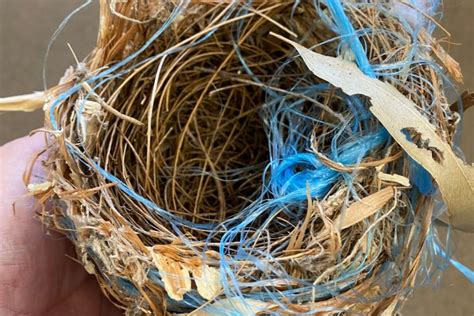Contrary to what its name suggests, the common coot isn’t your typical bird. These plump, black-and-white creatures have carved out a niche for themselves in the picturesque canals of central Amsterdam. But what truly sets them apart is their remarkable ability to turn human trash into cozy nests.
Imagine strolling along the tranquil waterways of Amsterdam and spotting a coot diligently gathering bits of plastic, paper, and other discarded items to construct its unique abode. It’s like witnessing nature adapt and thrive amidst our urban landscape.
Recently, a team of Dutch researchers embarked on a fascinating journey to unravel the mysteries hidden within these avian creations. They meticulously dissected several coot nests layer by layer, unearthing a treasure trove of human refuse dating back over three decades.
“The deeper layers are actually older layers.”
As each layer was peeled away, it revealed a snapshot of daily life frozen in time – from drug paraphernalia and food packaging to relics like a Mars bar wrapper commemorating the 1994 World Cup. The nest itself stood as a living artifact, bearing witness to the intertwined history of birds and humans in an ever-evolving cityscape.
Auke-Florian Hiemstra, the intrepid doctoral student leading this investigation at the Naturalis Biodiversity Center in the Netherlands, was captivated by his findings. His work shed light on how our castoffs find new purpose in unexpected ways – transforming from fleeting discards into enduring elements woven into nature’s fabric.
“Everything that ends up in the canals… most likely finds its way to a coot nest.”
Each item painstakingly cataloged by Mr. Hiemstra told a story – from candy wrappers with modern expiry dates to relics hinting at bygone eras like vintage McDonald’s packaging that sparked conversations with avid collectors. The nest became not just a home for birds but a living museum documenting our societal footprint etched in layers of debris.
Intriguingly, amidst mundane artifacts lay poignant reminders of global events like the Covid-19 pandemic represented by clusters of surgical masks cocooned within the nest—a surreal blend of contemporary crises interwoven with timeless natural instincts.
“Face masks… soft and warm… but also dangerous if entangled.”
The juxtaposition between ancient remnants and modern trinkets painted a vivid portrait of how wildlife adapts to our ever-changing world while unwittingly preserving fragments of our past within their humble dwellings. It was as if each discarded item found renewed significance when repurposed by industrious beaks and nimble talons.
Mr. Hiemstra’s research transcended mere scientific inquiry; it delved into realms where history converges with ecology, offering glimpses into parallel narratives unfolding alongside one another – one shaped by human hands, the other guided by instinctual forces beyond human comprehension.
“It really tells… story… from bird’s perspective.”
Ultimately, this journey led Mr. Hiemstra and his colleagues to ponder profound questions about humanity’s impact on the environment and how even fleeting moments leave lasting imprints on nature’s tapestry. The humble coot nest emerged not just as an amalgamation of trash but as an enduring testament to resilience amid ecological upheaval.
So next time you gaze upon those charming coots paddling serenely through Amsterdam’s canals or catch sight of their bustling nests perched atop metal pipes jutting above shimmering waters—remember that within those seemingly simple structures lie echoes of our shared past waiting to be unraveled anew.

